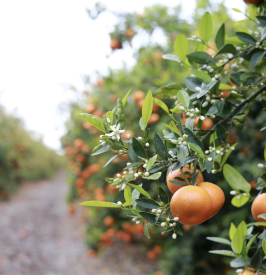Commercial properties sometimes have net lease arrangements in place – that is, a contract where the tenant pays a portion or all the property’s expenses like tax, insurance, and maintenance in addition to rent. These leases are prized because they reduce cost and responsibilities that would otherwise fall to landlords.
Most of Farmland Partners’ rental arrangements are net leases and cover many of the associated expenses, helping the company achieve property operating costs that are lower than you might see in other types of real estate.
For investors looking at a company’s net leases, the length of the leases and tenant creditworthiness are typically pillars of a portfolio’s cash flow characteristics. But these pillars behave a bit differently in farmland.
Consider, for example, a business that manages a portfolio of warehouses. Company investors want to see leases that are long enough to secure long-term cash flows and reduce risk of rental income disruption.
And those investors likely want to see investment-grade tenants on the rent rolls. After all, healthy companies with recognizable brand names and histories of meeting their financial obligations make it less likely that bankruptcies will affect the leasing arrangement.
Farmland leases must be looked at differently because of the asset class’s unique supply-and-demand characteristics. Green Street Advisors explained these differences like this in its 2021 primer on farmland investing:
“As a ‘zero-vacancy’ sector, cash flow interruption in Farmland is less of a concern, especially since the demand for high-quality institutional properties has resulted in a ‘natural selection’ of better skilled farmers operating the assets. … In a ‘zero-vacancy’ sector such as Farmland, shorter-term leases can serve to maximize rent obligations.”
The benefit of short-term leases, which are usually around three years, has been on full display in recent years and proved an effective way to achieve steady repricing in an industry where rent potential can outpace inflation.
Farmland rental rates are largely a function of farmer incomes, commodity prices, and land values. All have seen rapid growth in the past couple of years and would have been difficult to capture if locked into longer lease arrangements.
As for creditworthiness considerations, Green Street noted that farmers have demonstrated very little bad debt historically because of the nature of their industry.
That’s because business tools and public policies are in place to serve as a backstop that keeps farmers operating during the worst of times since agriculture is such an essential industry for a functioning society.
Today, food production is largely secured through a sophisticated crop insurance system that helps farmers navigate challenges presented by the market and Mother Nature.
Farmland Partners minimizes default risk by considering several factors during our underwriting process, including a farmer’s track record of cash flow; balance sheet strength; history of productivity growth; operational economies of scale; and the use of technologies and equipment to boost efficiency and productivity.
Our standard lease also includes a lien interest in growing crops, tenant insurance requirements, personal guarantees, and for fixed farm rents, about 50% of rent to be pre-paid prior to planting.
Most importantly, short-term leases don’t mean short-term relationships. FPI seeks to build meaningful partnerships with its tenants to prevent turnover. After all, long-term relationships tend to deliver lasting results for our tenants and investors alike.



